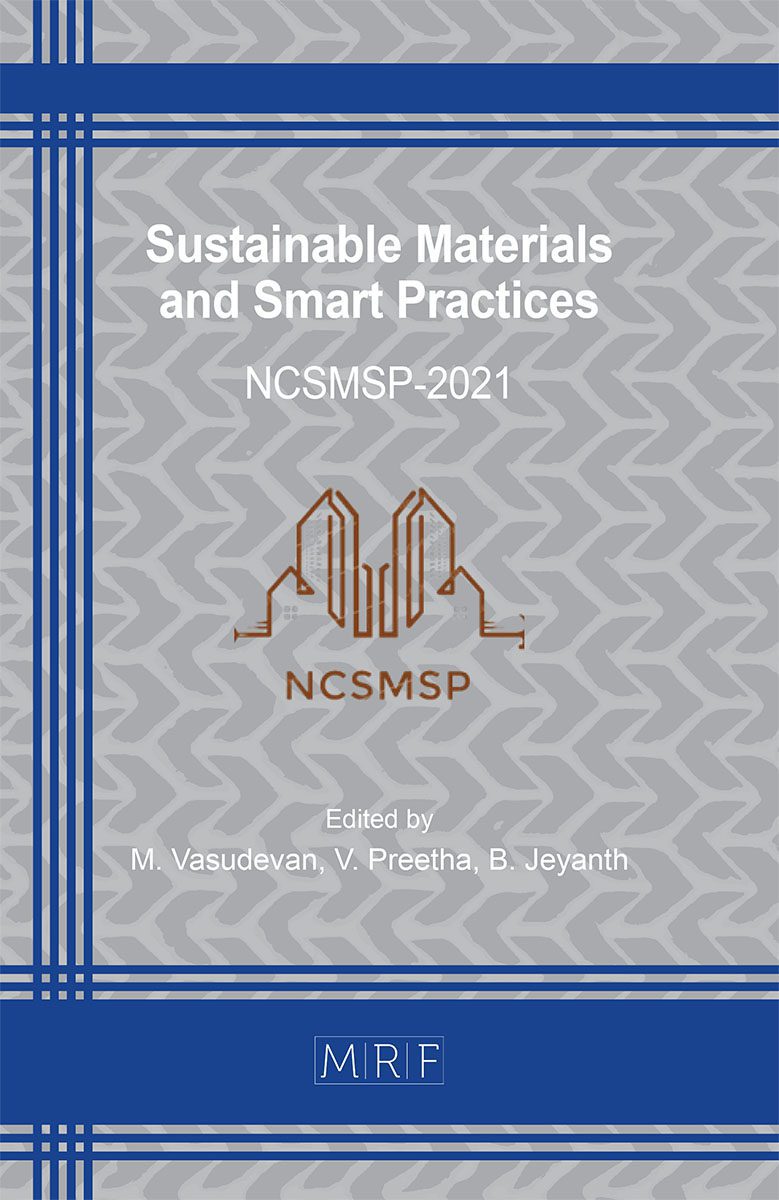Study on Physical and Mechanical Properties of Porous Concrete using Recycled Concrete Aggregate
T.S. Mukesh, P. Kulanthaivel, G. Gowthaman, J. Hariharan
download PDFAbstract. While porous concrete has a poor compressive strength because of its porous structure, concrete will lead to failure when the load applied is high. With recycled concrete aggregate and PVA fibre, an attempt was made to improve porous concrete’s physical and mechanical properties. The features of ingredients such as recycled concrete aggregate, cement, Polyvinyl alcohol fibre, and water were first discovered, and then the mix was created and cast. After proper curing, the mechanical properties of concrete were determined by conducting the following tests: compression strength, split tensile strength, and flexural strength, along with physical factors such as permeability. The findings reveal that using the aggregate size of 1012mm improves mechanical characteristics. Permeability was also excellent. On the other hand, strength increased as the percentage of PVA fibre grew and at a certain point strength as well as porosity decreased. The maximum strength was attained at an incorporation % of 1. The mechanical characteristics of the aggregate declined when the size increased, as the surface area available for the cement to bind them together shrank.
Keywords
Porous Concrete, Recycled Concrete Aggregates, Permeability, Polyvinyl Alcohol
Published online , 7 pages
Copyright © 2022 by the author(s)
Published under license by Materials Research Forum LLC., Millersville PA, USA
Citation: T.S. Mukesh, P. Kulanthaivel, G. Gowthaman, J. Hariharan, Study on Physical and Mechanical Properties of Porous Concrete using Recycled Concrete Aggregate, Materials Research Proceedings, Vol. 23, pp 304-310, 2022
DOI: https://doi.org/10.21741/9781644901953-35
The article was published as article 35 of the book Sustainable Materials and Smart Practices
![]() Content from this work may be used under the terms of the Creative Commons Attribution 3.0 licence. Any further distribution of this work must maintain attribution to the author(s) and the title of the work, journal citation and DOI.
Content from this work may be used under the terms of the Creative Commons Attribution 3.0 licence. Any further distribution of this work must maintain attribution to the author(s) and the title of the work, journal citation and DOI.
References
[1] Matthew Upshaw and C.S. Cai, Critical review of recycled aggregate concrete properties, improvements, and numerical models Journal of Materials in Civil Engineering, (2020). https://doi.org/10.1061/(ASCE)MT.1943-5533.0003394
[2] R. Rizvi, S.L Tighe, J. Norris, and V. Henderson, Incorporating recycled concrete aggregate in pervious concrete pavements Annual conference and exhibition of the transportation association of Canada-transportation in a climate of change, (2009).
[3] Z. Yang, W. Ma, W. Shen and M. Zhou, The aggregate gradation for the porous concrete pervious road base material Journal of Wuhan University of Technology-Mater. Sci.Ed., (2008) 23(3), pp.391-394.
[4] R. Sriravindrarajah, N.D.H. Wang, and L.J.W. Ervin, Mix design for pervious recycled aggregate concrete International Journal of Concrete Structures and Materials, (2012), 6(4), pp.239-246.
[5] M. Gupta, L. Dudi, R. Karkhanis and V. Kumar, Determination of Optimum Parameters of Porous Concrete for Adequate Strength and Permeability Urbanization Challenges in Emerging Economies: Resilience and Sustainability of Infrastructure Reston, VA: American Society of Civil Engineers, (2018) (pp. 129-136). https://doi.org/10.1061/9780784482032.014
[6] A.S. Agar-Ozbek, J. Weerheijm, E. Schlangenand K. Van BreugelInvestigating porous concrete with improved strength: Testing at different scales Construction and Building Materials 41, (2013) pp.480-490.
[7] D. Singhand S.P. Singh, Influence of recycled concrete aggregates and blended cements on the mechanical properties of pervious concrete Innovative Infrastructure Solutions 5(3), (2020), pp.1-12. https://doi.org/10.1007/s41062-020-00314-x
[8]E.J. Elizondo-Martinez, V.C. Andres-Valeri, J. Rodriguez-Hernandezand D. Castro-Fresno, Proposal of a New Porous concrete dosage methodology for pavements Materials, (2019) 12(19), p.3100.
[9] J. Yang and G. Jiang, Experimental study on properties of pervious concrete pavement materials Cement and Concrete Research, (2003), 33(3), pp.381-386. https://doi.org/10.1016/S0008-8846(02)00966-3
[10] M.A. Tijani, W.O.Ajagbe, A.A. Ganiyuand O.A. Agbede, Effect of aggregate type on properties of pervious concrete Journal of Modern Technology and Engineering, (2019), 4(1), pp.37-46.
[11] Vignesh Prabu, V., Shanthini, S., Prasath, S.B., Ramakrishnan, S. Mechanical properties of concrete made with partial replacement of fine aggregate by rice husk ash (2019) Indian Journal of Environmental Protection, 39 (2), pp. 185-189.
[12] IS: 10262-2009, Code of Practice for standard and high-performance concrete mix designs.
[13] Ramakrishnan, S, Velrajkumar, G & Ranjith, S, ‘Behavior of Cement-Rice Husk Ash Concrete for Pavement’, International Journal of Emerging Trends in Engineering and Development, Vol.1, Issue 4, pp 31-41, January (2014).































